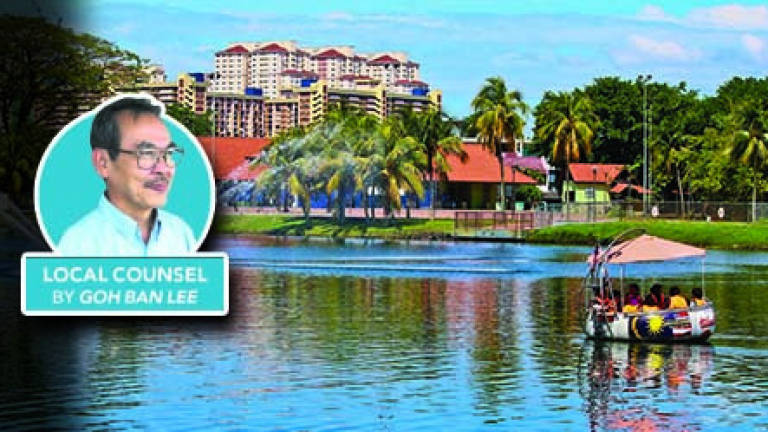Column - Help build happy cities

GENERALLY, human settlements are classified as villages, towns or cities. Following the British procedure, for a town to be classified as a city, it has to be proclaimed by the king. Hence, in the case of Malaysia, it is the Yang di-Pertuan Agong who does so.
There are 13 cities in Malaysia. George Town was the first town in Malaysia to be elevated to city status. It was proclaimed a city by Her Majesty Queen Elizebeth II on Jan 1, 1957. At that time, Malaya was still a colony of Britain.
Malaya achieved independence on Aug 31, 1957 and Malaysia was formed on Sept 16, 1963.
The other cities in Malaysia are Kuala Lumpur (1972), Ipoh (1988), Johor Baru (1994), Alor Star (2003), Kuala Terengganu (2003), Malacca City (2003), Petaling Jaya (2006), Shah Alam (2005), Kuching North and Kuching South (1988), Kota Kinabalu (2000) and Miri (2005).
With rapid urban migration, more and more people have moved from villages and towns to cities. More than half of the world's population live in cities. This results in massive traffic congestion in most cities worldwide.
People commonly talk about traffic jams in Bangkok and Jakarta. However, Los Angeles topped the Inrix Global Congestion Ranking 2016 as the most gridlocked city in the world. It is interesting that the United States accounted for 11 of the top 25 cities worldwide with the worst traffic congestion.
In the 1970s and 1980s Los Angeles was designed for car traffic, hence noted as a city with numerous freeways. But as the city grew and more and more people moved in, the roads could not cope with the increase in cars even if the city had spread out because of its car-centric development pattern.
Lately, Los Angeles has been trying to diversify its transport options so that its residents depend less on cars for mobility. They have been building subways and light-rail transit lines. The Expo Line from Santa Monica near the coast to Los Angeles was completed last year. Ridership on this line has been higher than expected.
Furthermore there has been talk about developing higher density neighbourhoods with mid-rise and high-rise apartment buildings, especially in the central parts of the city, rather than the typical landed houses which have been the norm in Los Angeles in the post World War II decades, so that people do not have to drive to work. Of course, there are also objections from affected residents who do not want high-rise buildings in their neighbourhoods.
The same theory holds for cities in Malaysia. Will it work if we simply build or widen roads and create more highways to cope with the increase in cars?
Of course, it will not. We need a more efficient public transport system, like the light rail transport and public buses alongside the many existing high-rise buildings.
In addition, we should create more walkable neighbourhoods where housing is mixed with shops, services and places to work to avoid long commutes.
The book, Happy City, by Charles Montgomery is a good example of how we can change urban life. It shows that living in densely populated cities can make people healthier, saner and happier.
Montgomery wrote about Bogota, the capital of Columbia which used to be a horrible place to live because of its reputation for kidnapping and murder.
The mayor of Bogota, Enrique Penalosa, emphasised great public spaces. His first defining act as the mayor was to declare war on private cars, not on crime or drugs or poverty.
"A city can be friendly or it can be friendly to cars, but it can't be both," Penalosa said. He scrapped highway expansion plans and pushed for bicycle paths, parks, libraries, plazas, schools and nurseries.
Penalosa increased fuel taxes, banned drivers from commuting by cars more than three times a week.
Although Penang is not facing problems like those in Bogota, it is good to appreciate what has been done in the South American city.
We need a mayor like Penalosa. "We might not be able to fix the economy. We might not be able to make every one as rich as Americans. But we can design the city to give people dignity, to make them feel rich. The city can make them happier". That was his declaration.
It is hoped that our urban planners, developers, local councillors and officers of local authorities can help build happy cities.
Datuk Dr Goh Ban Lee is interested in urban planning, housing and governance: letters@thesundaily.com